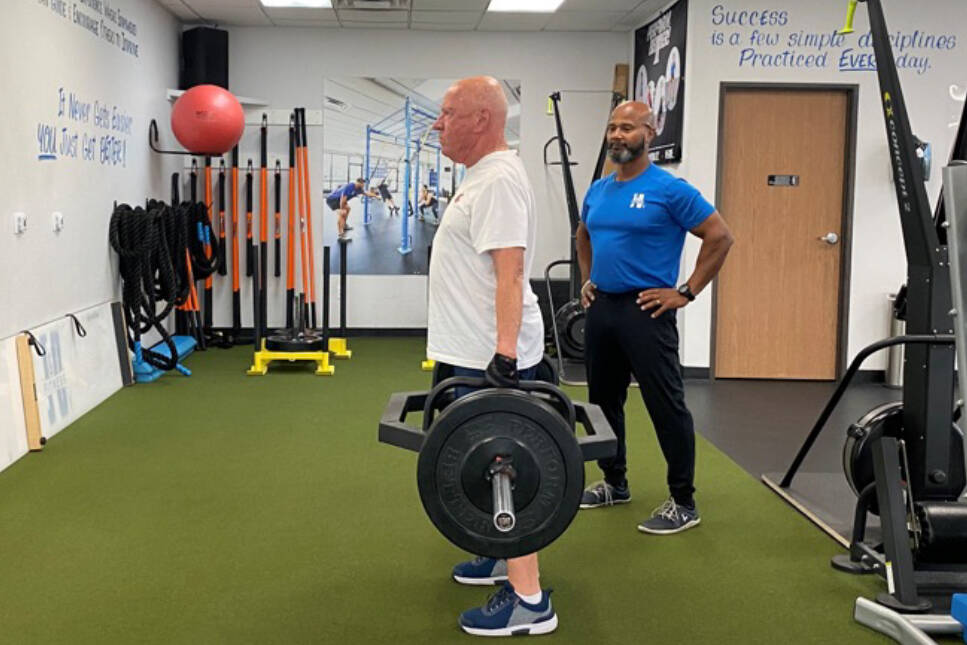Seeking a fountain of youth? Look to the gym
Life expectancy in the United States increased from 77.4 years in 2022 to approximately 78.4 in 2023, then to 79.25 in 2024 and is projected to be 79.4 years in 2025.
It should be noted that the expectations for the quality of living in the final decade of life have changed. Visions of playing bingo, book clubs and other sedentary activities are being replaced with traveling abroad, gardening and participating in 70 and over softball leagues.
Strength training has been used by older people to improve their performance in these activities, and many point to their workout routine as a method to slow down the ever-present biological clock.
One of the most cited and foundational research papers on the positive effects of strength training to offset aging in seniors was written in 1990 and published in the New England Journal of Medicine. This pivotal study demonstrated that even frail nursing home residents with an average age of 87 could significantly increase strength, muscle mass and mobility through progressive, high-intensity strength training.
The research overturned prior assumptions about exercise safety and effectiveness among the oldest seniors and led to a shift in approaches to healthy aging.
Longevity expert Dr. Peter Attia is a strong advocate for seniors using strength training as a key strategy to improve longevity and health span. He emphasizes that age-related declines in muscle mass, strength and function are largely driven by inactivity rather than by an inevitable biological process.
Attia argues strength training can partially reverse hallmark features of muscle aging, stimulate muscle growth and help maintain independence and quality of life, even in older adults.
Bone density (or bone mineral density) is a measure of the amount of minerals — mainly calcium and phosphorus — contained within a specific volume of bone. It reflects how strong and dense your bones are.
Higher bone density indicates stronger bones that are less likely to break, while lower bone density means bones are weaker and more prone to fractures or conditions like osteoporosis.
Doctors tend to start monitoring this metric in women at age 65, and for men at age 70. The Journal of Clinical Orthopedics published research showing the mortality rate for seniors after experiencing a broken hip from a fall is notably high, particularly within the first year after the fracture.
In this study, in patients ages 65 to 74, the one-year mortality was around 6 percent; for those 85 and older, it was 25 percent or more.
Participating in a full body strength training program, which includes exercises using multiple joints and in all planes of motion can lower these statistics.
Loss of muscle: Sarcopenia is a medical condition characterized by the progressive loss of skeletal muscle mass, strength and function, primarily associated with aging. It leads to muscle weakness, reduced mobility, increased risk of falls, physical disability, poor quality of life and higher mortality risks.
The condition is recognized as a syndrome with significant adverse effects, contributing to frailty and loss of independence.
A 2022 study titled “Strength training in elderly: An useful tool against sarcopenia,” published in Frontiers in Sports and Active Living, highlights that strength-based resistance training significantly improves muscle strength, muscle mass (hypertrophy) and overall function in older adults, effectively countering the progression of sarcopenia.
The study also emphasizes that strength training, alone or combined with nutritional strategies, is a safe, effective and practical approach to managing sarcopenia among the elderly.
Losing independence: A widely cited statistic from a 2017 survey by NORC at the University of Chicago reports about 61 percent of seniors 70 and older say losing their independence is one of their biggest fears. This concern ranks closely with fears about losing memory (67 percent) and being in poor health (59 percent).
Conversely, a study published in Live Active Successful Ageing, involved 451 older adults with a mean age of 71 years and demonstrated that one year of supervised heavy resistance training preserved muscle function and strength, with benefits lasting up to four years post-intervention.
The study found participants who engaged in heavy resistance training maintained their leg strength over time, while those in moderate-intensity training or non-exercising control groups experienced declines.
The preservation of muscle strength is closely linked to maintaining independence and functional ability in seniors.
It’s never too late to start, and most seniors should include some form of strength training to offset the aging process. It’s strongly recommended that the program work the whole body, include functional and balance drills and progress slowly.
Doug Sheppard is a nationally certified personal trainer with 34 years of experience. He is the owner of J&D Fitness Personal Training in Las Vegas.

















